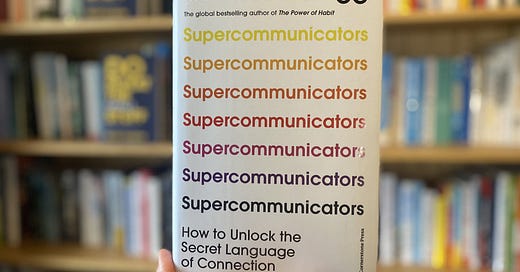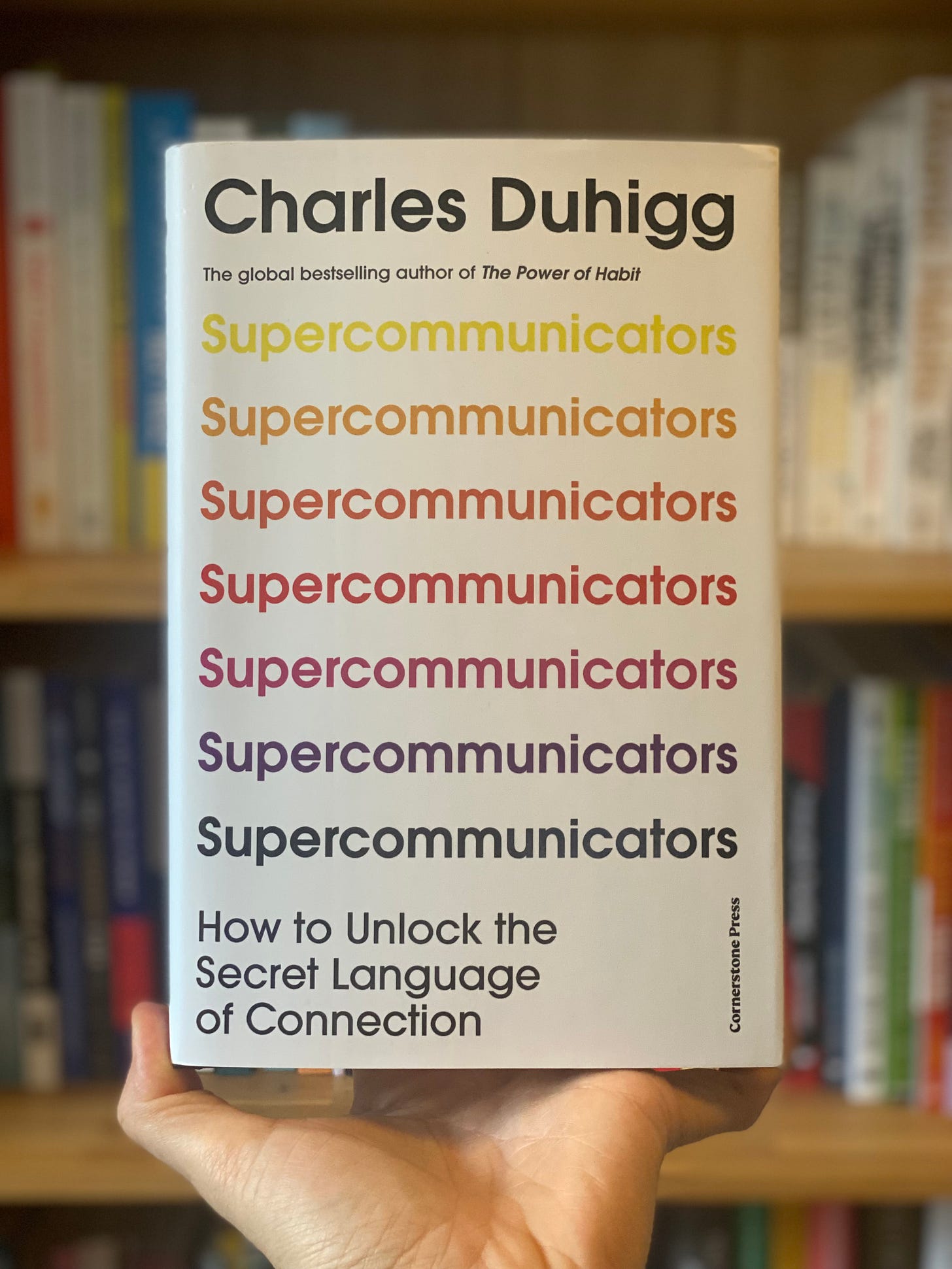How to unlock the secret language of connection
This week in what I’ve been reading: Supercommunicators by Charles Duhigg
Supercommunicators makes you feel like you’ve been given the handbook to something you didn’t even realise there was a handbook for! Insightful, full of suggestions for practical application, and packed with stories (case studies) that keep you turning the pages, this book will shift your perspective on how you converse with others.
What’s it all about then?
Supercommunicators explores what it takes to be a really effective communicator. At its heart is understanding that we are always in one of three types of conversation:
The “What’s this really about?” conversation
In these the aim is to understand what everyone wants, and then figure out how to make decisions together.
The “How do we feel?” conversation
These are emotional conversations, where listening is essential, are they are essential to connection.
The “Who we are” conversation
These relate to our social identities, what we have in common and our differences, how we relate to each other and how our relationships influence us.
Being able to identify which type of conversation we are having in any given moment - and which type others want to have - allows us to understand the mindset and approach required to connect deeply with the person we are speaking with.
Supercommunicators explores each type of conversation, how to identify which we are in, and key skills and approaches to help us to be effective.
What are the highlights?
I *loved* the stories. I actually listened to this as an audio book and there were several times I extended my walk because I wanted to hear the rest of the story.
The “What’s this really about?” section tells the story of a juror in a seemingly open and shut case who got his fellow jurors to see the case differently. The story itself is a page turner, and at key moments in the story Duhigg pauses to highlight what is going on, and what it is about the juror’s communication that has had such an impact. The case studies are so well told that they bring the concepts to life throughout.
Supercommunicators also left me with a feeling that I could go out that same day, practice using some of the ideas and techniques, and make a difference. The book has four sections called “A Guide to Using These Ideas” which provide very specific, actionable suggestions to bridge the gap between concept and application.
“The most effective communicators pause before they speak and ask themselves: Why am I opening my mouth? Unless we know what kind of discussion we’re hoping for – and what type of discussion our companions want – we’re at a disadvantage.”
Anything you didn’t like?
Not really! It would have been useful to have some more graphics summarising the overall concepts - mostly because that’s how I think. The content feels like it lends itself to this so it seems like an opportunity missed. I’d also be curious how to apply this learning on a team, not just an individual basis.
Why should I read it?
Read this if you’re looking for highly practical suggestions for having more effective conversations and deeper connection with those you work (and live) with. Read it also if you’re interested in the art and science of communication, and you love a good case study!
Supercommunicators: How to Unlock the Secret Language of Connection
By Charles Duhigg. Published by Cornerstone Press, 22 February 2024.
Available at Amazon UK, Amazon US, or Bookshop.org. (#aff links)
If you’re not already a subscriber to Small Stuff Big Impact, click here to have it delivered to your inbox:
Have you read Supercommunicators? I’d love to hear what you thought, so click here to add a comment or your own review:
And if you know someone else who might enjoy this, click here to send it to them directly:
Thank you!




